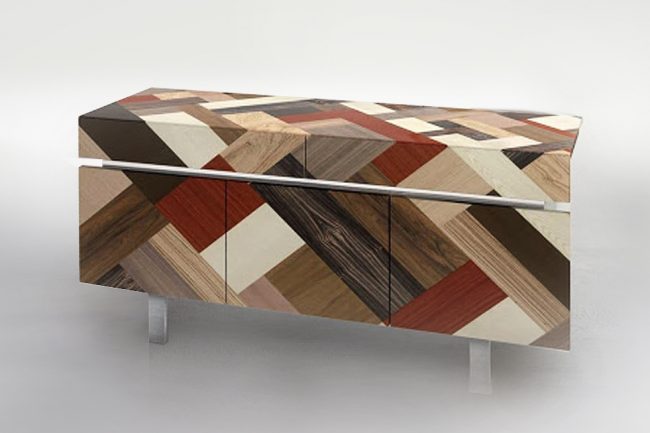DYED VENEER
Dyed Vs. Stained
The main advantage of veneer dying over veneer staining is elimination or avoidance of chromatic staining and color irregularity.
Natural veneer color shade or hue differs from log to another and even to an extent within the same log and after staining, the differences in hues remain if not worsened if stain is prepared in different batches, while dying requires bleaching first before dying and then the result is homogeneous and uniform color across the entire veneer batch.
It is critical and extremely important that dying is done with proper UV stable dyes as well as it is essential to use acrylic based lacquers to seal and finish dyed veneer for color fastening.
Visit tintoveneer.com for More information.
Stain is translucent, dye is transparent
Dying maintains and further accentuates the natural wood veneer color making all fibers and grains stand out as dye penetrates through the wood veneer veins and fibers through the entire veneer thickness while stain is basically microscopic film that sits on the veneer surface and depending on how concentrated and intense the stain is, it forms kind of “translucent” film on top of veneer as opposed to transparent color in case of dye.
Coloring Possibilities
It is possible to dye dark veneer with any color including very light ones as dying requires turning the veneer to white color through bleaching process before applying dyes, while incase of staining, dark veneers cannot be stained into lighter colors.
For Woodworkers
Dyed veneer means less work to color their project specified veneer. However, it is critical and extremely important that the dying is done with proper uv stable dies as well as it is essential to use acrylic based lacquers to seal and finish dyed veneers for color fastening.


